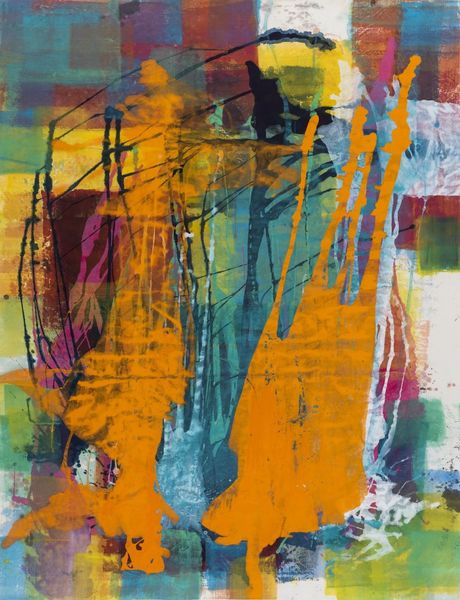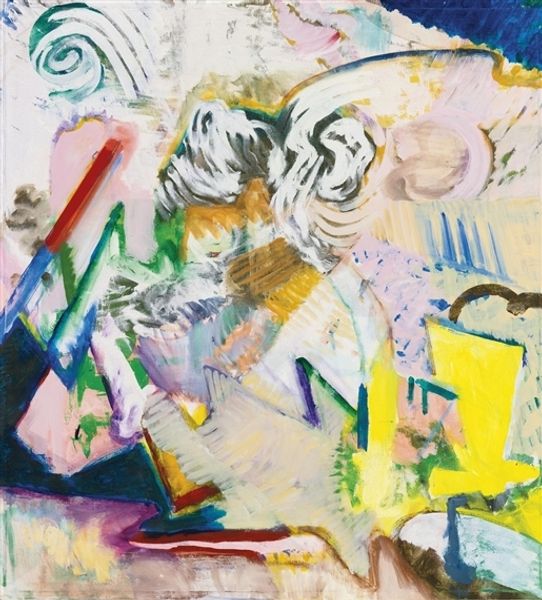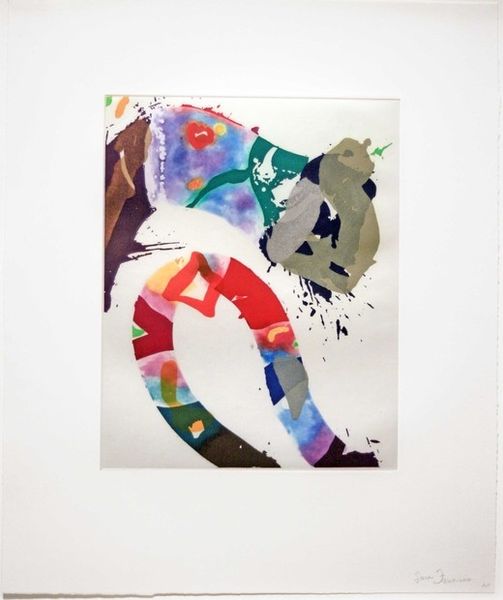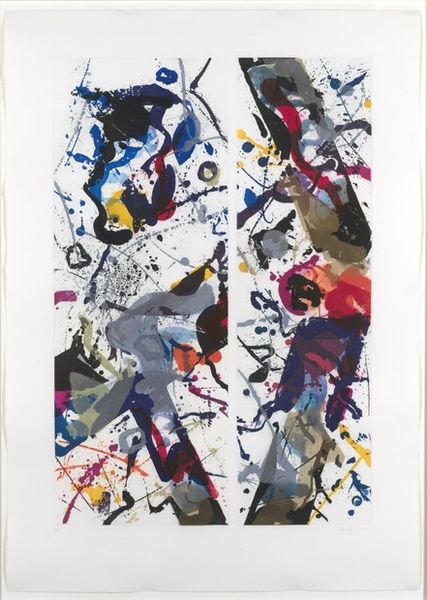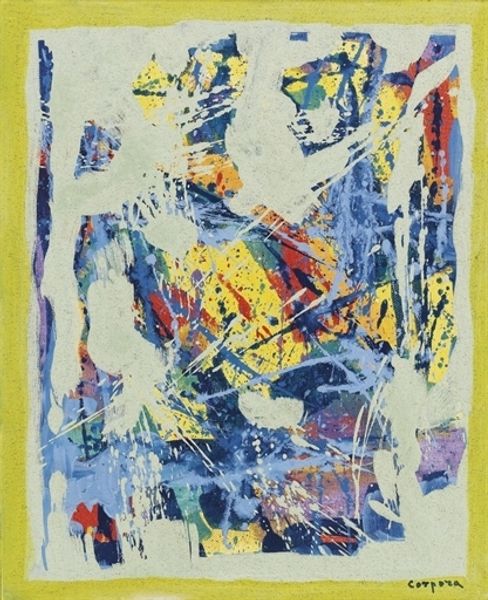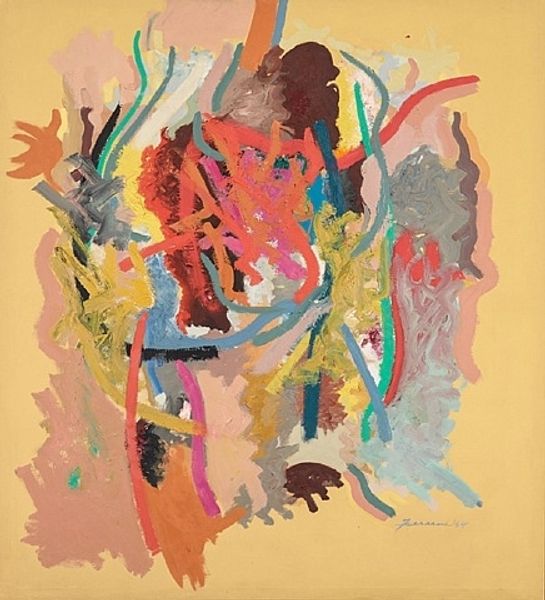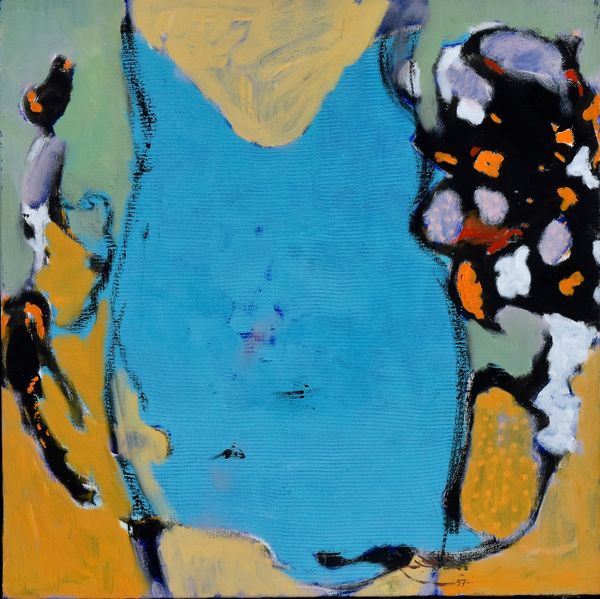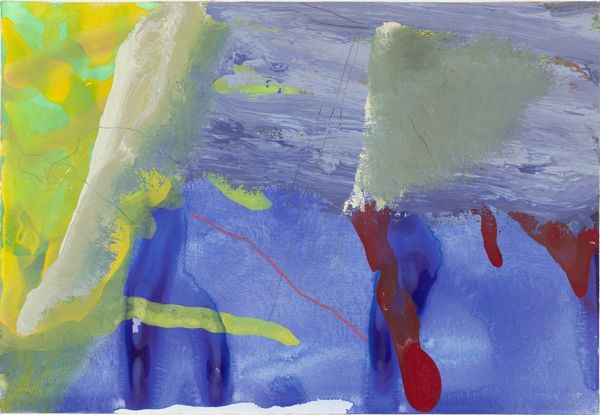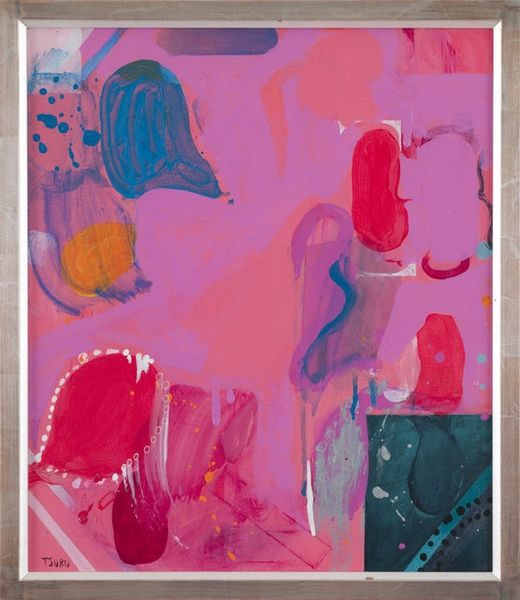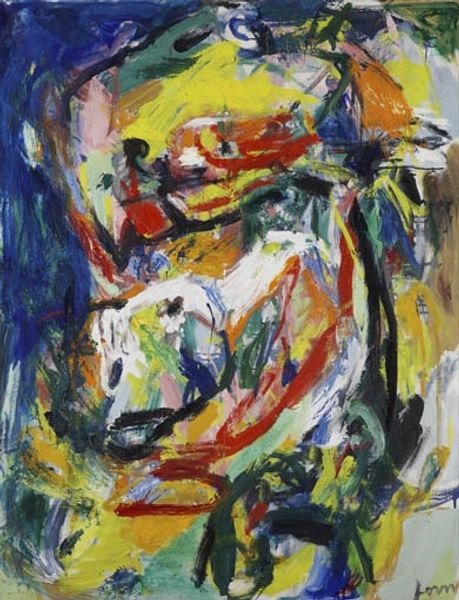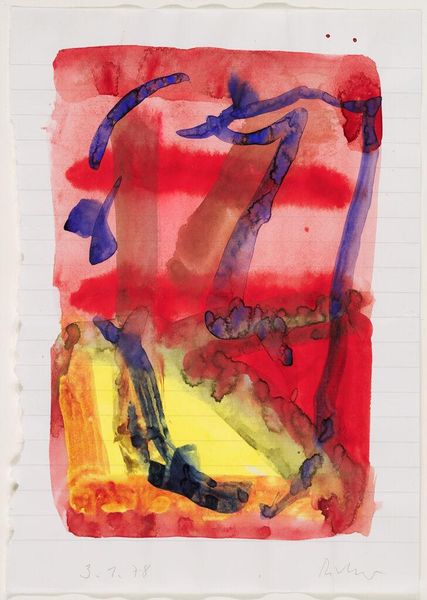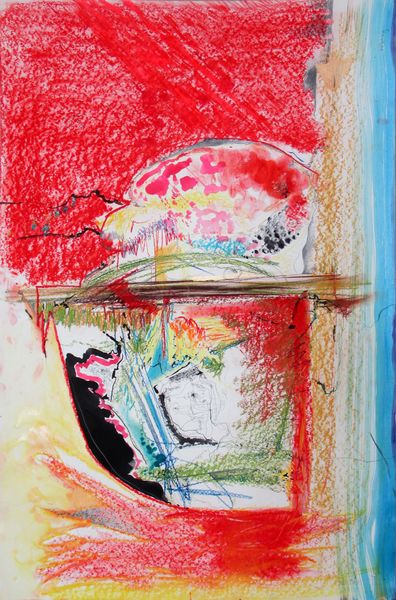
painting, oil-paint, impasto
#
painting
#
oil-paint
#
impasto
#
abstraction
#
modernism
Copyright: Courtesy of the office of Rashid Al Khalifa
Curator: Well, hello there. Today, we’re looking at Rashid Al Khalifa's “Homage to Fragmented Abstraction II,” an oil painting from 2006 that is full of impasto textures. Editor: My initial thought is how jarring and unsettled this composition is. The yellow and blue fight against the clustered strokes of orange and green. It’s almost like a disassembled face. Curator: Al Khalifa's work is profoundly engaged with the dialogue between tradition and modernity in Bahrain. His exploration of abstraction here—the fragmentation you picked up on—speaks to a breakdown of familiar visual language. He layers oil paint heavily. You can see the process; his artistic labor. Editor: It does, in a way, seem to deconstruct ideas of identity and perhaps alludes to a personal struggle through these broken forms. Also, what could that little daub of pink suggest in the center? A coded message? Is the artist trying to bring a touch of the feminine to his work, and does it feel revolutionary? Curator: Well, there's no direct statement about that from the artist, but your ideas connect powerfully with a discussion of cultural evolution and gendered roles. Looking at the materials, oil paint itself carries a historical weight – the legacy of European masters. But here, its deployment into something quite different is what stands out. It’s not academic at all. The thickness and the gesture embody this concept really well. Editor: Yes, exactly, especially since Al Khalifa lives and works in Bahrain, making his engagement with art history incredibly salient and rich. If one zooms out to consider the wider socio-political climate, these broken images perhaps represent a fracture between established identity and new forms of self-expression. Curator: That rings true. What really hits me is how the heavy application makes you almost want to reach out and touch it; to consider art as something literally built by the artist's hands, instead of just a visual thing. Editor: Thank you, as always, for illuminating the connections to art production and society that sometimes escape the immediate grasp of the viewer. I can appreciate how the choice of oil and brushstrokes carries significance here, not simply aesthetic effect. Curator: Thanks. Thinking about how an artist transforms raw materials to offer viewers new frameworks to think from is something I believe is quite a vital perspective.
Comments
No comments
Be the first to comment and join the conversation on the ultimate creative platform.


